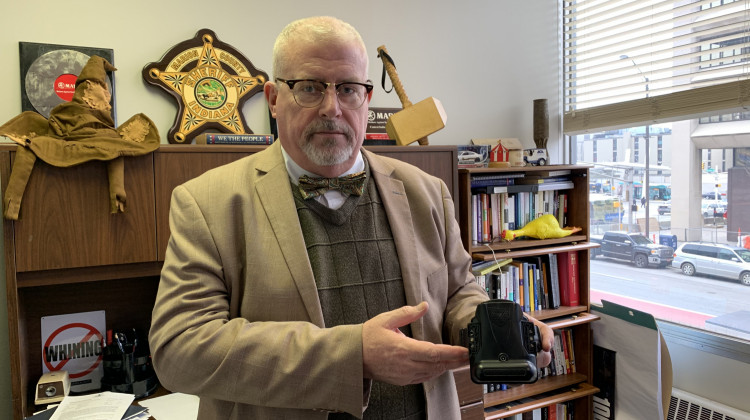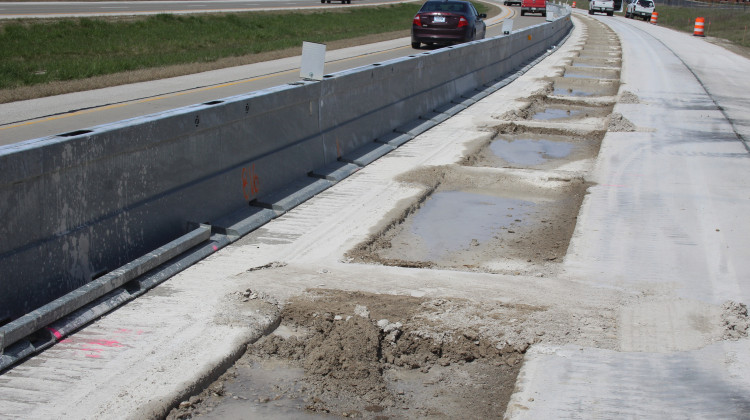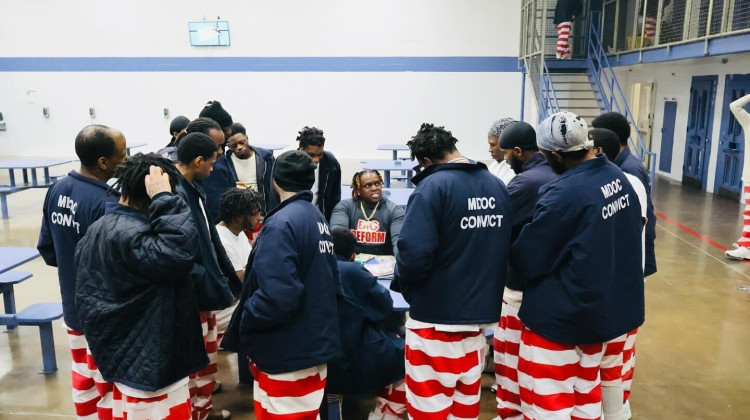Marion County has one of the largest electronic monitoring programs in the country. Electronic monitoring allows the justice system to track people outside of jail -- through GPS or home detention.
The practice makes it possible for some offenders to stay close to family, keep working and receive services like mental health or addiction treatment. But a growing number of people question its effectiveness.
On any given day in Indianapolis, more than 4,300 people wear electronic monitors.
They wear the devices under different conditions. Some are on pre-trial. Some wear them as part of a sentence, or on parole. It’s called “community supervision," and many would like to move more people onto this program and out of jails, including Marion County Community Corrections Executive Director Tyler Bouma.
"Incarceration really needs to be the alternative to community supervision," he says.
Bouma says monitoring decreases jail overcrowding and saves money. It’s also a reform tool.
"A tool that helps us raise accountability level for our clients and provide some structure for our clients with scheduling and things like that," says Bouma, "so that we can work with them to raise their readiness to change level and then address those criminogenic needs those psychosocial needs."
But for the thousands in the electronic monitored system, the needs are many.
Caroline Vance is a social worker with the Marion County Public Defenders office. She says there are also too many barriers.
"There's just ways for them just to continually be held down no matter what they try to do," says Vance. "And I think that for people who are not of color and who are fortunate to be more affluent, they don't understand what that feels like."
For one thing -- people assigned to wear the ankle bracelets have to pay for them. Marion County Corrections charges a fee to get the device -- and a daily charge ... somewhere between $4 and $14.
"For our clients who are living at or below the poverty line," says Vance, "that is a significant amount of money out of their budget every single month that could be used for other things."
Things like food, transportation, bills.
And while monitoring is also meant to allow more people to keep their jobs, their movements are restricted -- they have to schedule everything they do. Marion County Public Defender Attorney Lucy Frick says that doesn’t work for every job.
"An employer who's willing to allow you to deal with that as often as you need to deal with it. If you have children and you have to like, at the blink of an eye, get out and go pick up those children. It's hard because you have to schedule that out," says Frick.
Frick works with social worker Vance. They join a number of voices concerned about the increased use of electronic monitoring, especially for low-level offenders and those in need of mental health or addiction treatment.
Frick says in the end, monitoring is more punitive than reformative.
"And I am of the personal opinion that for the vast majority of our crimes," says Frick, "I don't think we can punish our way out of them."
Frick says it just can’t work the way it’s meant to without more long-term wraparound services.
Of course there are many who say it is better than jail. Brishon Bond is wearing a GPS monitor on pretrial. He faces burglary charges.
"I've sat in the jail and not been able to work. So certainly, I wish that I didn't have this thing on my ankle. Feel a little bit like a tagged pigeon, but it could always be worse," says Bond.
Bond is luckier than many, he has family support and a job that allows him to work with the monitoring restrictions. But he worries about how far others are being held back.
"It's the intersection of race and economics that sometimes provide for harsher sentences, increase bail, stigma, so on and so forth," says Bond. "And we have to be honest about that if we're going to actually do criminal justice reform in a substantive way."
In the past five years, the number of people being monitored in Indianapolis has more than doubled.
 DONATE
DONATE







 View More Programs
View More Programs


 Support WFYI. We can't do it without you.
Support WFYI. We can't do it without you.